These modern history classroom simulations are going to be a hit in your class. Sometimes I struggle with making history content more exciting outside of reading. Since I am certified in several subjects, I’ve taught ELA, reading, history, and math. For me, math was the easiest content and more engaging. History? Not so much…Sooo let’s cue in classroom simulations! 🪄
I love classroom simulations and the students love them. It’s a win-win. These modern history simulations are the ones I have used successfully with my 8th-grade students. They are great for higher grade levels. Simulations also happen to be an amazing tool for teaching language learners. They are reenactments of real-life situations which encourage the use of authentic language applications. All our students could use that!
Check out my blog post about Executing a Meaningful and Successful Simulation in the Classroom for tips to make sure your simulations are amazing! These tips will make simulations impactful for all students. Now let’s get started with the simulations for modern history!
The French Revolution – Reign of Terror
Have you ever played the party game Mafia? This simulation is based on that game! Through this classroom simulation, your students will experience what the people of France faced during the Reign of Terror. Give them a little paper cut out of a person and assign them a role as a Jacobin, Girondin, Royalist, or Committee of Public Safety. They must keep their role a secret!!!
They will then take turns accusing classmates of being Royalists. Everyone will put their heads down and you will call each group separately to raise their heads. Each group will choose someone to accuse as a Royalist. Once every group has accused someone, you will give off different scenarios of why they are being accused of being a royalist. For example, they didn’t seem sad when an accused royalist was killed or they were complaining about Robespierre. No one will be safe in this game!

If they are found guilty by the Committee of Public Safety, they will face the guillotine aka the paper cutter. I do about three-four rounds of accusing two-three students. This simulation really helps students learn about the political groups of this time period. You can find further instructions, paper cutouts, a presentation, scenarios for the accusations, and reflection questions here. It’s all prepped and ready to go!
The Industrial Revolution – Working in a factory

You have to do this classroom simulation for a great introduction to work conditions in a factory and the concept of an assembly line. Your students will be creating a product, a cut-out, and racing against another factory to create the most. There will be a certain job (cutting out part of the paper) for each assembly worker and a manager in each “factory”. The manager of each factory will be in charge of making sure their workers are producing quality work at an efficient rate.
Before students start their “jobs”, show them this list of factory rules.
While they are working, play loud factory noise in the background, turn off your lights, and close the blinds. These will mimic the environment of early factories. Pause the game a couple of times and choose a couple of factory workers to lose an eye or a limb. Explain to them that they must still continue working if they want their pay and that it’s their fault they got hurt, not the companies. (Obviously!)
After giving them about five-seven minutes to work, select a responsible honest student to do the quality control check. They will decide whether the product is good enough to sell on the market. This will determine the winner of the game. If you choose to you could also have an artist working on the outside of the factory. They will create the same product but in better work conditions. I offer the artisan colored pencils, a choice of listening to their own music, and a piece of candy. Compare their products to each other as well as sign a selling price. This will help the students learn that while products created in the factory are cheaper, they may not be as good of quality as one created uniquely by an artisan. This PDF has a more in-depth explanation, plus the snowflake cutouts!
Capitalism – Battle of the Taco Trucks
This classroom simulation game will walk students through an inquiry process about the key ideas of Capitalism; the law of the invisible hand, the law of competition, no government interference in the economy, cheaper prices, and better quality of a product. Here is the rundown of how it works!
The goal of the simulation is for each team to create the best taco truck and try to make the most money in sales in three rounds. The teacher will put students into groups to represent a taco food truck. Each round the teacher will buy FOUR tacos from ONE taco truck.
The groups aka the food trucks will decide on what ingredients to include in the tacos, calculate production cost, a selling price, and finally how much profit they made/loss. The ”customer” (the teacher) will hint at what he/she is looking to buy before each round. After each round, the teacher will explain why he/she chose to buy from the taco truck. During this time, the teacher should emphasize the use of organic ingredients, the price of the product, how they “see” a lot of customers at a certain truck, etc.
Here are the rounds:
• Round 1- I am from a poor family and am just looking for something simple and cheap.
• Round 2-I am from a middle-class family that can afford a little more and am going vegan.
• Round 3-I am from a middle-class family that is okay spending money on something good because I am starving after coming home from work.
After each round, discuss questions to help drive the idea of who decides what and how much to make as well as the pricing. Right before the last round, it is revealed that one of the taco trucks doesn’t wash its hands and the customer keeps getting diarrhea to led to the discussion of government involvement.
Ready to try this social studies simulation out? Here is the link for this simulation – available in English and Spanish. Just print and go! Included are cut-outs, ordering sheets, reflection questions, and a presentation. Students have so much fun with this one! It’s so applicable to their real life.
Feel free to use these graphics when teaching the invisible hand. ✋
WWI – The MAIN Game
The MAIN game is a great introduction to World War I that goes over the MAIN causes of WWI! The MAIN causes students will experience during this game are Militarism, Alliances, Imperialism, and Nationalism. Students will be in groups and create their own country. They will then try to take over the world! It is very similar to the game RISK.
Countries will take turns trying to take over the world by conquering territories, building industries, and military, and creating alliances. They will also have the chance to go to war with other countries to take their territories and resources. On each turn, they will receive 3 free resources from the teacher to buy tactical cards. The winner of the game is the country that has the most territories on the world map or eliminates the competition.
I have everything set up nicely for you in this product. I’ve used this simulation as an introduction to WWI while students took notes about the causes of the war, the teams would take turns in the MAIN game. It is a hit with the students and honestly provided me time to bond with students while they took their turns.
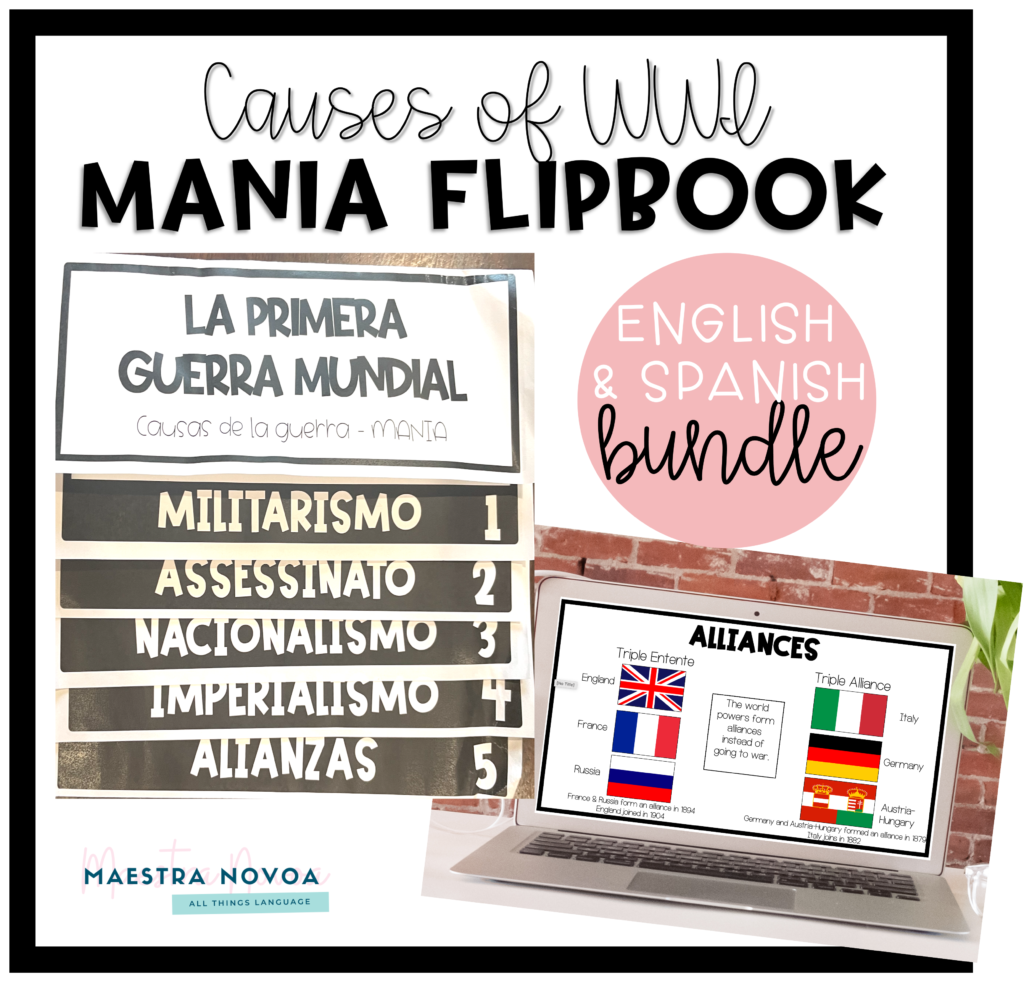
WWI – Trench warfare
Let your classroom become a trench with this super fun history simulation. I flip my desks on their sides to take up more space and to create more “protection”. Make one row really neat and what not so neat. This will be realistic and represent how Germany had set up better trenches than the French. In the middle will be…yes you guessed it…NO MAN’S LAND! I make a sign to put up and remind students not to go there because they will probably not survive. I also make a sign for the infirmary and assign a few nurses to be in charge of it.

The ammunition for this game will be paper balls. Type out reflection questions and then have students crumple them up to use as ammunition. (There is a link if you keep reading with some reflection question ideas.) When their battle is over, they can recycle the ammunition by answering the questions that are on there. If a student is hit by the other side, they are hurt and must go to the infirmary. Once all soldiers on one side are in the infirmary, the battle is over.
Before starting the battle, I like to read some excerpts of what life in the trenches was like. This website, Rare Personal Accounts of Life in the Trenches in 1917, has a few you can choose from. I also like to mention how they were never sure when battles would start, the trenches were muddy and water would get stuck there, and there were rats and lice! One year I described how hard it was to get rid of lice because of their wool uniforms, the next week I found out I had lice. 😔
Check out this blog post as it explains the simulation more in-depth, plus there are WWI resources.
Leading up to WWII – Economy Simulation
Students are going to get a taste of what it is like to be an adult with a job and expenses! This social studies simulation will take students through what life was like in regard to the economy in Germany. Students will receive a salary depending on their job. There are three jobs; a business person, a factory worker, or a vendor. Their salary will go up a bit each month, but not enough to cover everything they need to buy! They will need to pay rent, buy food, buy one coat for winter, materials for school, whatever emergency comes up, and save money. Woo, that’s a lot! 😜
As a month go on they will see a dramatic increase, or inflation, in the products. This will represent what happened prior to World War II. In the end, it will be voting on the leader that will either promise a big change in the economy or the leader who assures that if they wait it out, things will get better.
My team teacher a few years ago shared this with me so I do not know who or where to give original credit to or where to guide you to get an English version of this simulation. If you know, please let me know!! I have free Spanish Google slides if you would like to do this simulation, just make a copy! You can use the numbers on this as a guide to doing this in English.
Cold War – The Red Scare
Give students a taste of what it was like to be an American in the 1950s during the McCarthy Era with this simulation. I like to get red butcher paper, cut the ends of it, and hang it on top of the door so it dangles down as students walk into class. Each student will receive a piece of paper either blank or with a dot. Give out fewer dots than blanks. Students will need to stay quiet about whether they have a dot or not! The goal of this game will be for the non-dots to form a group as large as they can without any dots in it. Those with dots have the goal in infiltrate the non-dot groups.
Remind them, that they cannot reveal their papers to anyone! Give students about five minutes to accomplish their goal of forming groups. If a student suspects that someone is a dot, they are free to announce that to others in the class. A student who is accused of being a dot should be trying to convince others they are not a dot. In the end, have students reflect on what the dots/non-dots felt like and what it was like to a suspected dot.
Don’t forget your Teaching with Text freebie!
Now that you’ve provided students with a context by using a simulation of new content, their comprehension of written material will surely be higher! To help you out with planning, I created this FREE checklist for Teaching with Text. This will ensure you are maximizing the text you’re using.
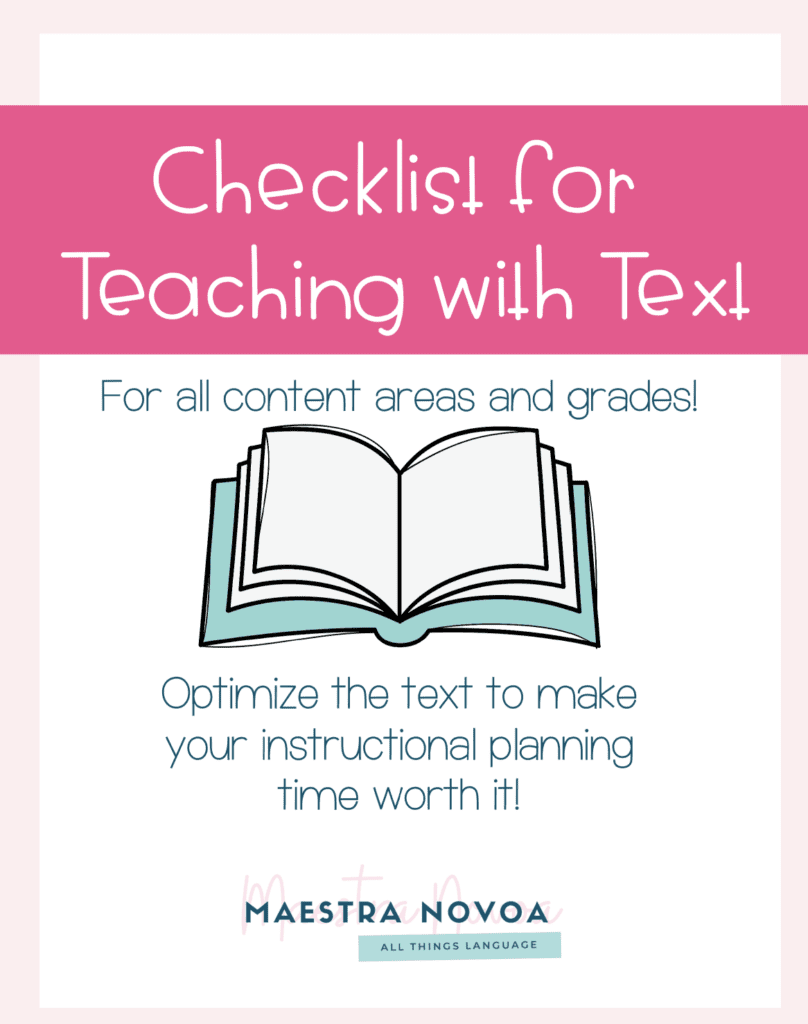
Closing
Classroom simulations are a great way to engage students in a memorable and fun lesson. I hope that you can put these modern history simulations to use in your classroom. Do not forget to check out my other blog post about making your simulations successful and meaningful! The authentic language opportunities will benefit your English language learners… And the rest of your learners in your classroom! If you know of any other great simulations I’m missing out on, let me know by leaving a comment pleasssssse. I hope your students (and you) enjoy these 7 modern history classroom simulations.

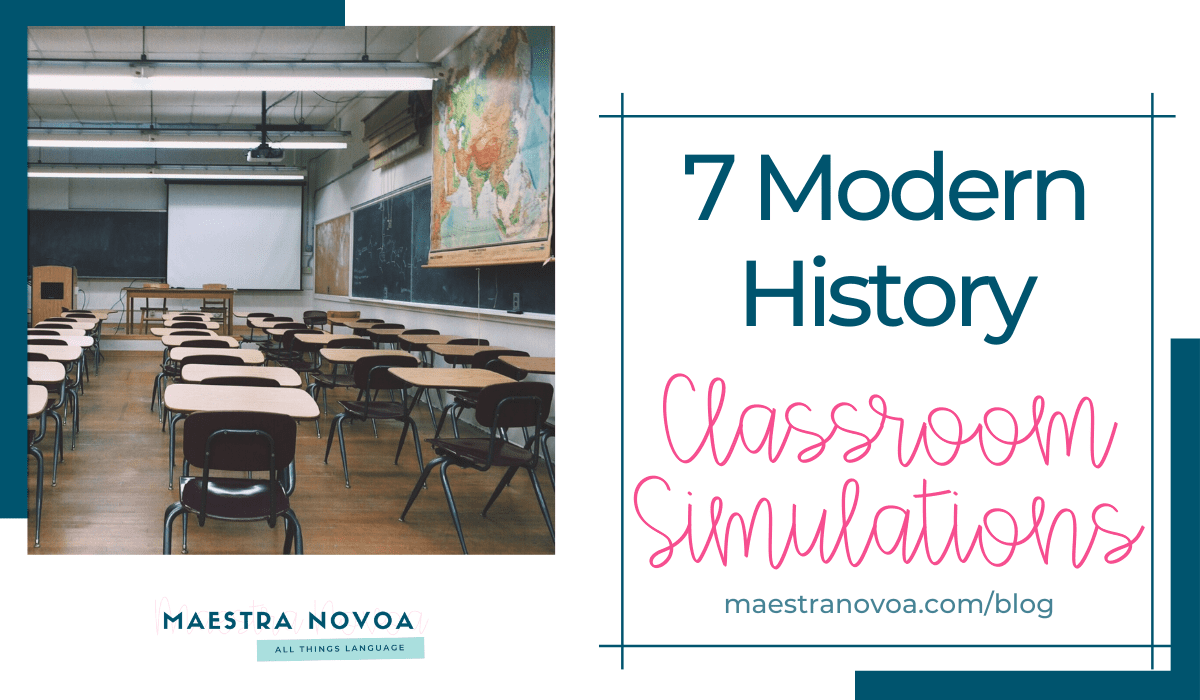
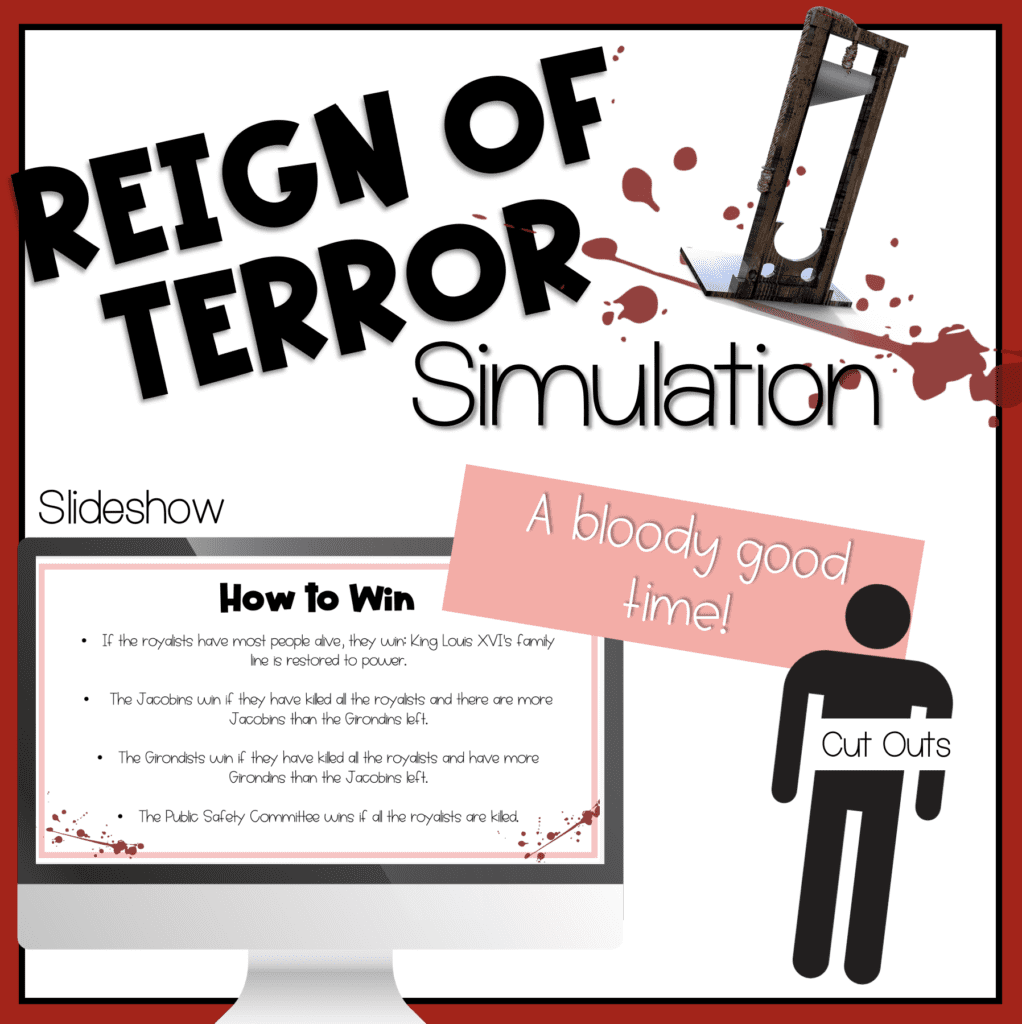
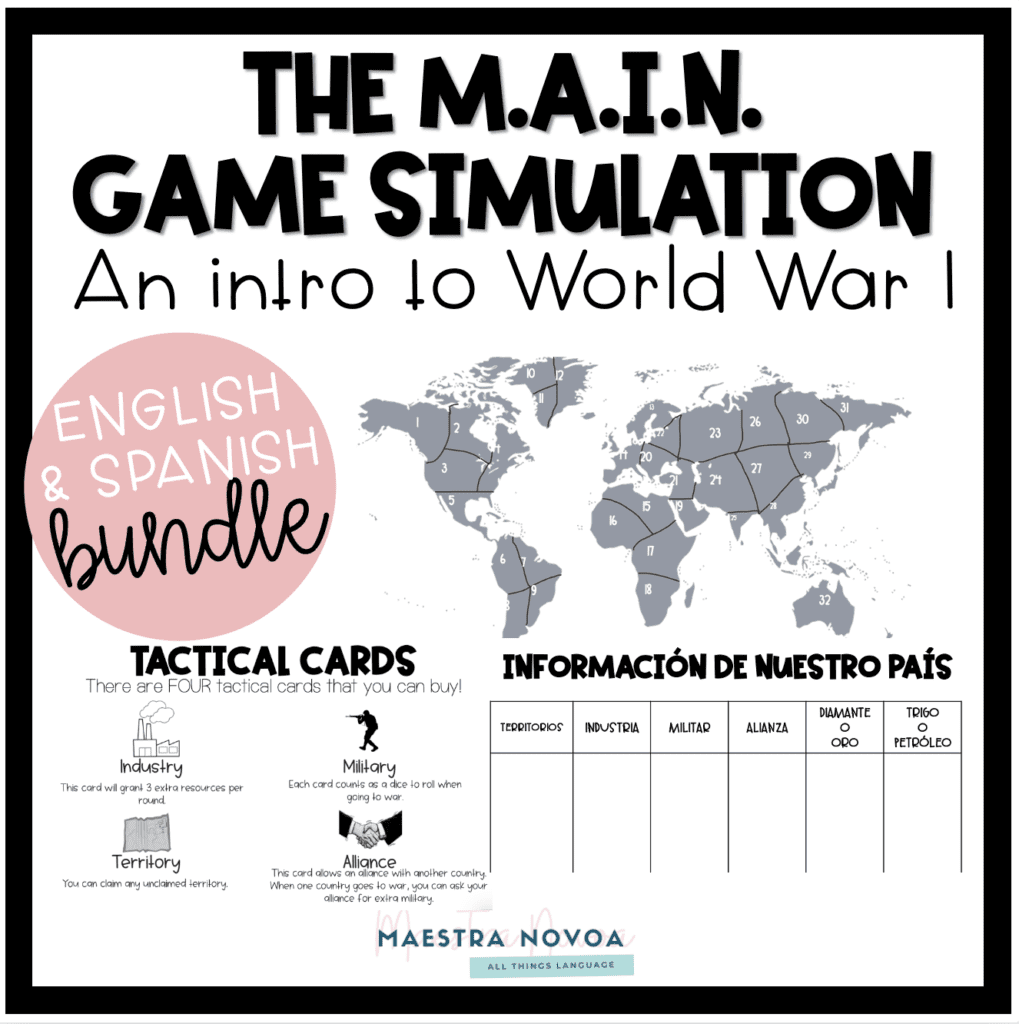

One Response